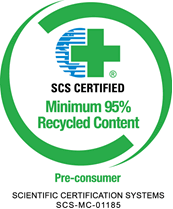Concerns about building occupants’ comfort continues to grow from both an owner and regulator standpoint. One major concern is how to manage sound in our living and work spaces.
In the past, a building’s sound issues were tackled from the interior looking at walls and ceilings. Now, there is a continued focus on the exterior of a building with a desire to create systems that can better handle outdoor environments (air traffic, highway traffic, etc.) and sensitive buildings (hospitals, schools, etc.) in a more effective way. In this post, we will provide an overview of Sound Transmission Class (STC), how it is measured and tested, several ways to increase STC, and finally how SECUROCK® Roof Boards help create better environments for STC.
STC is the most common sound isolation standard used today and is for airborne noise (unwanted sound). Typically measured in dB (decibels), the higher the STC number the better that system is for blocking airborne noise. One thing to remember, dB’s are a logarithmic unit and displayed on a logarithmic scale, therefore, going from 40dB to 50dB isn’t a 125% increase in perceived sound it actually means the perceived sound is twice as loud. The measurement is over a frequency range of 125-4000 Hz (Hertz) and uses transmission loss to calculate what the STC is. So, STC isn’t necessarily what a system (wall, ceiling, roof, etc.) will stop, but more closely related to a ranking of how well a system can prevent sound transmission. Since STC ignores low frequencies, it also has major limitations in real world applications for areas that are indicated above (for example air traffic has a lot of low frequency noise that is missed by STC). Despite its limitations, STC is an easy number to use and allows agencies and companies to gather data on systems in order to help solve some of a building’s concern around sound.
 Testing for STC is typically done by third party laboratories that have trained acousticians. There are several standards for measuring STC, but the most popular ones are ASTM E90-09 (Standard Test Method for Laboratory Measurement of Airborne Sound Transmission Loss of Building Partitions and Elements) and E413-10 (Classification for Rating Sound Insulation). These ASTM standards create a method for testing airborne sound transmission loss in partitions and obtaining a single number rating called STC. There is a lot that goes into the actual testing of the partitions, but the general idea is as follows:
Testing for STC is typically done by third party laboratories that have trained acousticians. There are several standards for measuring STC, but the most popular ones are ASTM E90-09 (Standard Test Method for Laboratory Measurement of Airborne Sound Transmission Loss of Building Partitions and Elements) and E413-10 (Classification for Rating Sound Insulation). These ASTM standards create a method for testing airborne sound transmission loss in partitions and obtaining a single number rating called STC. There is a lot that goes into the actual testing of the partitions, but the general idea is as follows:
- A partition is constructed between two rooms in a laboratory setting.
- While noise is played on one side of the wall, the sound levels over the frequency range of 125-4000 Hz are measured on both sides of that partition.
- The transmission loss of the system is calculated from the difference between the sound levels in the two rooms.
- STC is calculated for that partition based on the transmission loss data collected.
Now that we know what STC is and how it is measured, there are some things to think about in real world applications that might be able to help improve airborne sound transmission. There are several ways to increase the STC rating of a roof/ceiling assembly including adding mass, adding air space, adding absorptive material and decoupling. First, adding mass to a roof/ceiling assembly can have a big effect on blocking sound and this is typically done by adding layers of material such as SECUROCK® Gypsum-Fiber Roof Board. Second, adding air space within the partition increases the STC. The increasing air space between ceiling tile and a roof deck increases the STC more than having ceiling tile directly under the roof deck. Third, using an absorptive material like specialized ceiling tile or increase insulation will help increase STC. Finally, decoupling is a mechanical solution that separates layers of the roof/ceiling assembly making it difficult for sound to pass. This typically means using sound clips which USG also manufactures and sells. There are many tricks to increase the STC rating of a roof/ceiling assembly, but remember that everything from the top of the roof membrane to the bottom of the ceiling tile must be considered in order to get the best system.
Lastly, we want to share how SECUROCK® Roof Boards are helping out with this complex issue of building exteriors. We recently did testing at Riverbank Acoustical Laboratories in Geneva, IL to understand some of the effects that STC has with roofing. We took typical roof assemblies and then trialed different configurations. Here are some things we discovered:
- Adding roof boards increased the system STC incrementally
- Glass-Mat and Gypsum-Fiber provided similar results for STC
- The type of insulation does have an effect on STC
- Mechanically attachment and fully adhered systems provided similar results for STC testing
Below is a typical roof assembly that we tested and achieved a STC rating of 41. This assembly had an EPDM membrane, 5/8” SECUROCK® Gypsum-Fiber cover board, two layers of 2” insulation, 5/8” SECUROCK® Gypsum-Fiber thermal barrier, and a 22 gauge steel deck. We evaluated various construction details of a roof assembly to evaluate their effects on STC rating.
We want everyone to understand that although a roof board adds to the STC rating, the main job of a roof board is to help protect everything below it as well as extend the life of that roof. While a roof board will contribute to the STC of a roof/ceiling assembly, a better reason to choose it is to maintain that STC rating throughout the roof’s useful life.
Please contact your SECUROCK® Roofing Solutions Team for more information and advice regarding your next installation.

























 First of all, the principal source of synthetic gypsum is from removing polluting gasses from power plants to reduce emissions of harmful materials into the atmosphere. In the process of flue-gas desulfurization (discussed later), synthetic gypsum is produced which is identical to natural gypsum.
First of all, the principal source of synthetic gypsum is from removing polluting gasses from power plants to reduce emissions of harmful materials into the atmosphere. In the process of flue-gas desulfurization (discussed later), synthetic gypsum is produced which is identical to natural gypsum.
